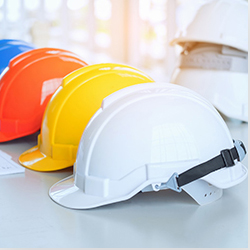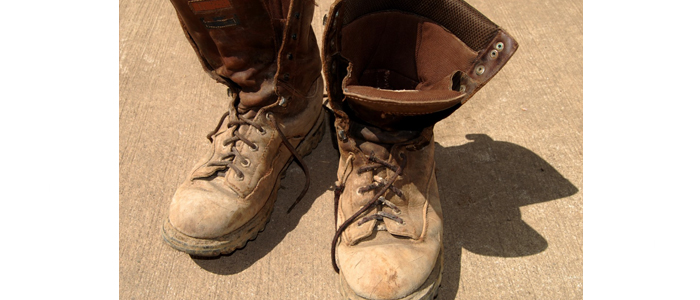A Guide To Head Protection PPE
Posted by Alona Zakharchenko_del
on 31 January 2018

Head protection like hard hats or bump caps are compulsory in almost every industry where there is a risk of being injured by falling objects or when working in areas with limited head space.
This could include workers in roles such as:
- - Construction/Road construction and maintenance/Mining
- - Roofing
- - Power line maintenance/Railway maintenance work
- - Forestry
What’s the best head protection for me?
In environments where there is a risk of injury from dangers such as falling objects, debris or electric shocks, a hard hat is required for protection. Hard hats are specially designed to feature a gap between the helmet and the head of the person wearing it, which reduces the impact on the head in the event of an accident. Different colours of hard hat are used to help identify people with different roles on a construction site – for more information, see our guide to the hard hat colour code. If you’re working in an environment where high impact protection is not needed, but workers may still need some protection from bumps or scrapes, you could choose a bump cap, which is a lightweight version of a hard hat designed for lower impact contact.What are the regulations for head protection?
Head protection is a very serious matter, and as such there are some regulations and standards that you need to be aware of, including:- - Personal Protection Equipment Regulations (2002) – According to these regulations, employers must provide workers with all necessary PPE equipment free of charge, as well as ensuring that it is properly stored, maintained and fit for purpose. Employees must also be trained on how to use equipment such as hard hats properly to ensure they’re used as effectively as possible.
- - EN 397 - This is a European standard which specifies the requirements which need to be met for safety hats to be recognised as fit for purpose. It requires that all helmets should include vertical shock absorption, penetration resistance, flame resistance, and have a chin strap attachment that releases at a maximum of 250 N of force.
Employer PPE requirements
In industries where employees’ health and safety is at risk and Personal Protective Equipment (PPE) is required for day-to-day working, employers are responsible for:- - Providing PPE equipment free of charge and making sure it is fit for purpose
- - Providing training to ensure employees are aware of the need for PPE equipment, as well as how to use it properly
- - Maintenance, repairs or replacement of equipment as and when required
- - Ensuring PPE products carry the necessary CE mark in accordance with the Personal Protection Equipment Regulations 2002
Comments
Latest Blogs

An updated guide by consumer organization Which? looks at how to protect people’s ears. They focus on two main types of ear protection, earplugs and ear defenders.
27 June 2023

A review submitted by the Department of Work and Pensions (DWP) has recommended that the Health and Safety Executive (HSE) should compel employers to improve their behaviour in issues of workplace health and safety.
21 June 2023

Drivers are being urged to consider their footwear choices when behind the wheel, particularly during hot summer days when flip-flops are popular.
21 June 2023

Leave a comment